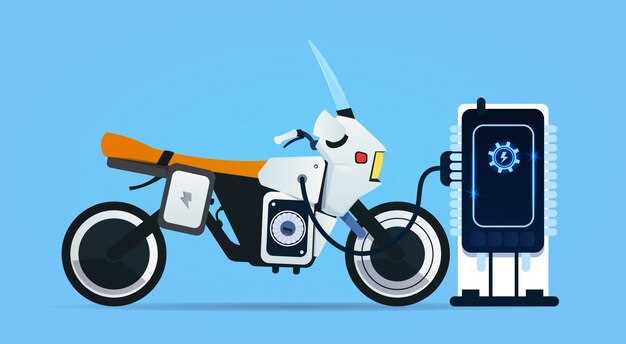

In recent years, the motorcycle market has witnessed a significant transformation, primarily driven by the emergence of electric bikes. This shift is not just a trend but a reflection of changing consumer preferences, advancements in technology, and increasing environmental concerns. As riders seek more sustainable options, the comparison between electric and gasoline motorcycles becomes crucial for both enthusiasts and prospective buyers.
Gasoline motorcycles have long dominated the market, known for their raw power and the adrenaline rush they provide. The distinct sound of a roaring engine and the thrill of riding a traditional bike have made them iconic symbols of freedom on the road. However, as technology progresses, electric bikes are starting to close the gap, offering impressive performance without the environmental ramifications associated with fossil fuels.
This article aims to dissect the key differences between electric and gas motorcycles across various dimensions such as performance, maintenance, cost, and environmental impact. By understanding these factors, potential motorcycle owners can make an informed choice that not only aligns with their riding style but also reflects their values regarding sustainability and innovation.
Cost Analysis: Initial Investment and Maintenance of Electric vs Gas Motorcycles

The initial investment for electric motorcycles typically exceeds that of gas bikes. High-capacity batteries and advanced technology often drive up the purchase price of electric models. While prices vary widely, an electric bike can cost anywhere from $5,000 to $25,000, while gas motorcycles generally range from $3,000 to $20,000. However, government incentives and rebates for electric vehicles may help lower the effective cost for buyers.
Maintenance costs also diverge significantly between electric and gas bikes. Electric motorcycles are usually simpler in design, containing fewer moving parts, which reduces wear and tear. This can lead to lower maintenance expenses over time. Typical maintenance for gas bikes includes regular oil changes, fuel system upkeep, and more frequent repairs related to the combustion engine. In contrast, electric bikes primarily require battery checks and software updates, making them less costly to maintain.
Furthermore, fuel costs present another aspect to consider. Electric motorcycles benefit from lower charging costs compared to gasoline prices. Depending on local electricity rates, the cost to fully charge an electric bike can be significantly less than filling a gas tank. This ongoing expense contributes to the overall financial advantages of owning an electric motorcycle.
In summary, while the initial investment for electric bikes may be higher, their lower maintenance costs and reduced fuel expenses often make them a more economical choice in the long run compared to traditional gas motorcycles.
Performance Metrics: Acceleration, Range, and Handling Comparisons
When it comes to choosing between electric and gasoline motorcycles, performance metrics such as acceleration, range, and handling are crucial for making an informed decision. Each type of motorcycle excels in different areas, catering to specific rider preferences and environments.
Acceleration is one of the most significant performance indicators. Electric motorcycles typically offer instant torque, resulting in rapid acceleration from a standstill. This can lead to impressive 0-60 mph times, often outperforming gasoline motorcycles in urban settings. Gasoline motorcycles, while having a different power delivery curve, can provide thrilling high-speed acceleration thanks to their engine designs, especially at higher RPMs. Riders may prefer the visceral experience of a gas motorcycle, where engine sound and vibrations add to the excitement.
Range is a critical factor for riders planning longer trips. Gasoline motorcycles generally boast superior range due to the higher energy density of fuel compared to batteries. While many electric models have made significant strides in increasing their range, they often fall short of the miles available from a full gas tank. However, advancements in battery technology are gradually closing this gap, with some electric motorcycles now offering ranges that accommodate longer rides, especially when charging infrastructure becomes more widely available.
Handling characteristics can vary significantly between electric and gas motorcycles. Electric models often have a lower center of gravity thanks to battery placement, resulting in more stable and maneuverable handling. This can enhance the riding experience, particularly in tight corners. Conversely, gasoline motorcycles have traditional designs that can feature varied weight distributions, influencing their handling dynamics. Many riders appreciate the feedback and engagement provided by gas engines, giving them a distinct connection to the bike.
In summary, both electric and gasoline motorcycles present unique performance attributes across acceleration, range, and handling. The choice ultimately depends on the rider’s priorities, whether they prioritize instantaneous power, long-distance capability, or a traditional riding experience.
Environmental Impact: Emissions and Sustainability of Electric and Gas Bikes

The environmental impact of motorcycles largely depends on the type of propulsion system they utilize. Electric bikes are generally regarded as a more sustainable option compared to their gasoline counterparts. One of the primary advantages of electric motorcycles is their zero tailpipe emissions. As they operate on electricity stored in batteries, they do not emit pollutants such as nitrogen oxides and particulate matter, which are common with gasoline-powered bikes.
Gasoline motorcycles, on the other hand, contribute significantly to air pollution. They release carbon dioxide, a greenhouse gas that contributes to climate change, along with other harmful emissions that affect air quality. Over time, the cumulative effect of these emissions plays a critical role in urban smog and respiratory problems among populations living in close proximity to high traffic areas.
When considering the sustainability of these vehicles, electric motorcycles present a more favorable scenario. The energy required to charge electric bikes can be sourced from renewable energy, such as solar, wind, or hydroelectric power, further reducing their overall carbon footprint. In contrast, gasoline motorcycles rely on fossil fuels, which are not only finite but also involve extraction processes that can be environmentally destructive.
Battery production for electric bikes also presents environmental challenges. The mining of lithium, cobalt, and other materials can result in habitat destruction and pollution. However, advancements in recycling technologies and the development of more sustainable battery materials are improving the lifecycle sustainability of electric motorcycles.
Ultimately, while both electric and gasoline motorcycles have their respective environmental impacts, the shift towards electric models offers a more sustainable solution in terms of emissions and energy sourcing. As technology progresses and the infrastructure for charging improves, electric motorcycles are likely to become an increasingly viable option for eco-conscious riders.
